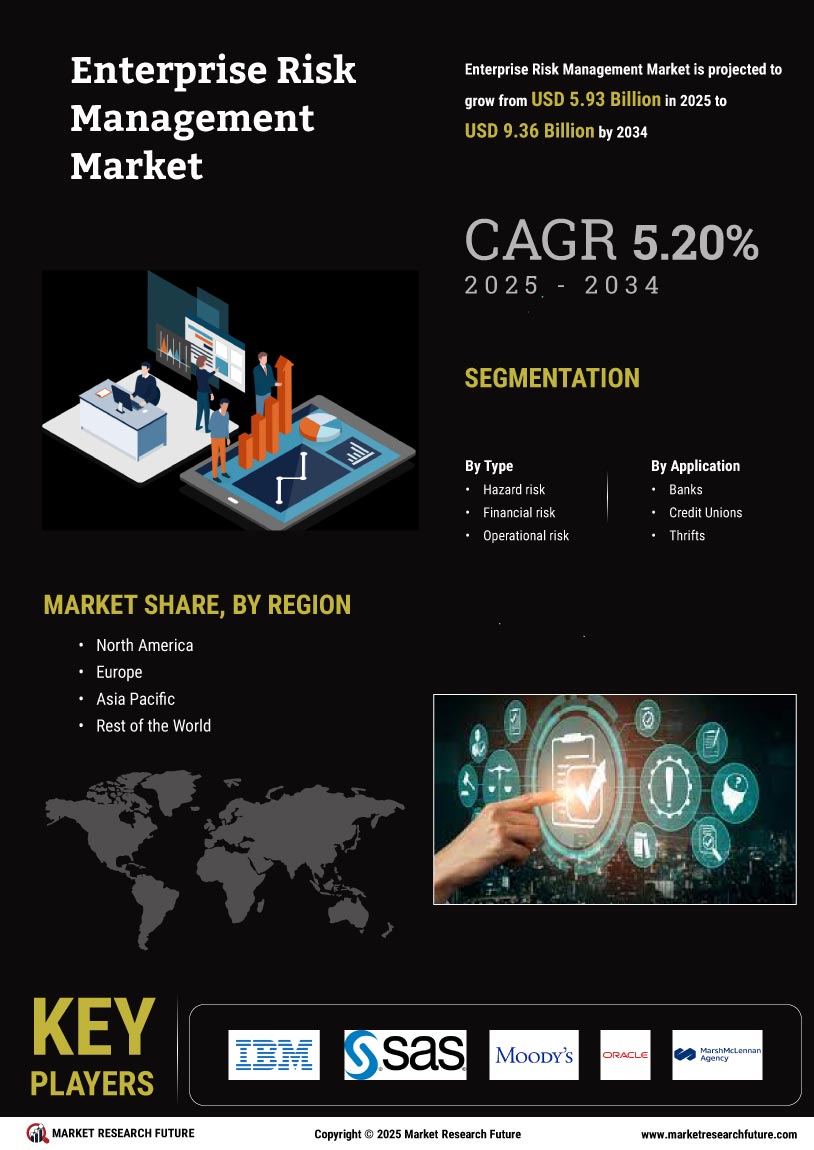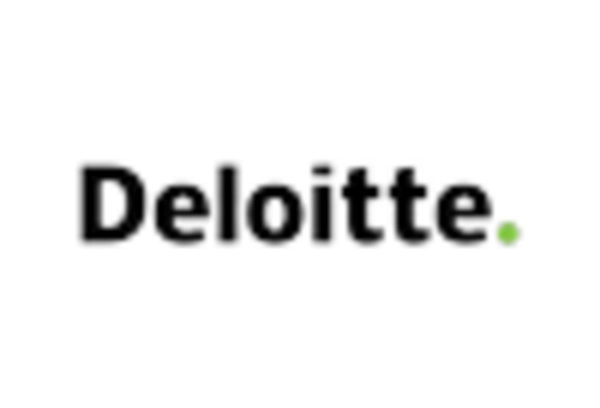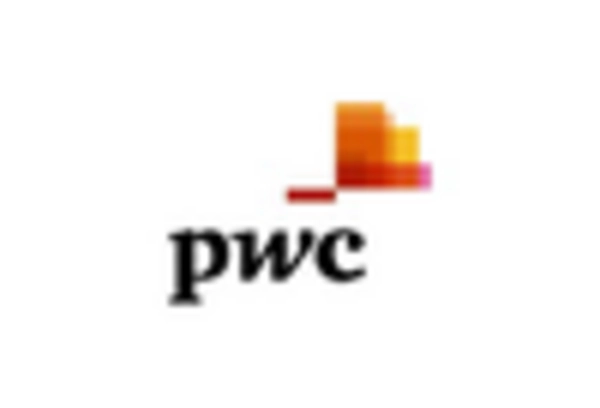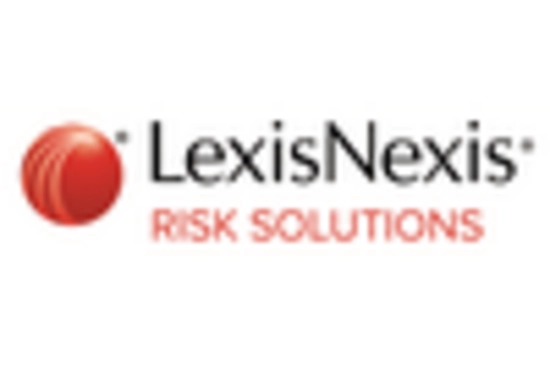Increased Regulatory Scrutiny
The Enterprise Risk Management Market is experiencing heightened regulatory scrutiny, compelling organizations to adopt more robust risk management frameworks. Regulatory bodies are increasingly mandating compliance with stringent risk management standards, which has led to a surge in demand for Enterprise Risk Management solutions. Organizations are now required to demonstrate their ability to identify, assess, and manage risks effectively, which has resulted in a significant uptick in investments in risk management technologies. Recent data suggests that the compliance segment within the Enterprise Risk Management Market is expected to witness a growth rate of around 10% annually. This trend underscores the importance of aligning risk management practices with regulatory requirements, thereby enhancing organizational resilience and accountability.
Focus on Operational Resilience
The focus on operational resilience is emerging as a key driver in the Enterprise Risk Management Market. Organizations are recognizing the necessity of maintaining business continuity in the face of various disruptions, whether they be natural disasters, technological failures, or market fluctuations. This realization has prompted a shift towards more comprehensive risk management frameworks that emphasize resilience. Recent studies indicate that companies investing in operational resilience strategies are likely to experience a 15% reduction in operational disruptions. This trend is indicative of a broader understanding that effective risk management extends beyond mere compliance; it encompasses the ability to adapt and thrive amidst uncertainty. Consequently, the Enterprise Risk Management Market is witnessing a surge in demand for solutions that enhance operational resilience.
Integration of Advanced Analytics
The integration of advanced analytics into the Enterprise Risk Management Market is becoming increasingly prevalent. Organizations are leveraging data analytics to identify, assess, and mitigate risks more effectively. This trend is driven by the need for real-time insights and predictive capabilities, which allow businesses to make informed decisions. According to recent estimates, the analytics segment within the Enterprise Risk Management Market is projected to grow at a compound annual growth rate of approximately 12% over the next five years. This growth is indicative of a broader shift towards data-driven risk management strategies, where organizations utilize sophisticated algorithms and machine learning techniques to enhance their risk assessment processes. As a result, companies are not only improving their risk management frameworks but also fostering a culture of proactive risk mitigation.
Growing Awareness of Cybersecurity Risks
The growing awareness of cybersecurity risks is a pivotal driver in the Enterprise Risk Management Market. As organizations increasingly rely on digital platforms, the potential for cyber threats has escalated, prompting a reevaluation of risk management strategies. Companies are now prioritizing cybersecurity as a critical component of their overall risk management framework. Recent surveys indicate that nearly 70% of organizations consider cybersecurity risks as a top priority in their risk management agendas. This shift is leading to increased investments in cybersecurity solutions, which are expected to contribute significantly to the growth of the Enterprise Risk Management Market. By integrating cybersecurity measures into their risk management strategies, organizations aim to safeguard their assets and maintain stakeholder trust.
Adoption of Integrated Risk Management Solutions
The adoption of integrated risk management solutions is gaining traction within the Enterprise Risk Management Market. Organizations are increasingly seeking holistic approaches that unify various risk management functions, enabling them to address risks in a more cohesive manner. This trend is driven by the recognition that siloed risk management practices can lead to inefficiencies and blind spots. Recent market analyses suggest that the integrated risk management segment is projected to grow at a rate of approximately 11% over the next few years. By adopting integrated solutions, organizations can streamline their risk management processes, enhance collaboration across departments, and ultimately improve their risk response capabilities. This shift towards integration reflects a broader movement towards comprehensive risk management strategies that align with organizational objectives.

















Leave a Comment